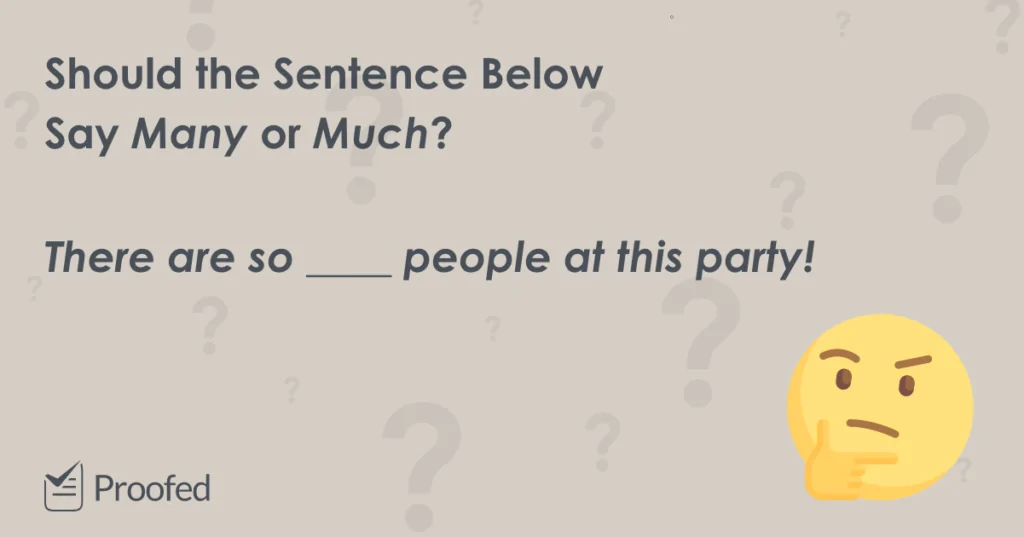“Many” and “much” are both quantifiers (i.e., they indicate quantity). The difference is that we only use “many” with things we can count, while we use “much” with things we can’t count. To make sure your writing is grammatically correct, then, check out our guide below.
Many (Countable Nouns)
“Many” means “a large number.” We use it when we want to indicate the quantity of a plural countable noun, such as “cats” or “books,” without giving an exact number. We can use “many” in a few situations:
- Negative statements (e.g., There weren’t many people at the meeting)
- Asking a question (e.g., How many oranges are in the crate?)
- With degree modifiers such as “too,” “so,” or “very” (e.g., There are too many people in the room or There are so many chores to do)
- Formal affirmations (e.g., There are many cows in the field)
You’ll note that we say “formal” affirmations here. That’s because “a lot of” is a more common way of making a positive statement in everyday English:
There are a lot of cows in the field.
However, “many” is more formal. As such, so you should use it when referring to a large number of things in formal documents.
Much (Uncountable Nouns)
The term “much” means “a large amount of” something. We use it when we want to indicate the quantity of an uncountable noun, such as “sand” or “joy.” As with “many,” we use this term to suggest a large quantity without giving an exact amount. We also use this word in the same situations:
- Negative statements (e.g., I don’t have much experience of skydiving)
- Asking a question (e.g., How much time is left?)
- With degree modifiers such as “too,” “so,” or “very” (e.g., I bought too much food or He has so much money)
- Formal affirmations (e.g., The news caused much excitement)
And like “many,” we often use “a lot of” for positive statements in everyday language, although “much” is still more appropriate in formal writing:
Find this useful?
Subscribe to our newsletter and get writing tips from our editors straight to your inbox.
The news caused a lot of excitement.
The only real difference between these words, then, is that we use “much” with things we can’t count individually.
Many Of and Much Of
One key variation with these terms comes when there is an article, pronoun, or demonstrative between “many” or “much” and the noun being modified. In this case, we need to use the preposition “of” after “many” or “much.”
You can see examples of this below:
- Articles (i.e., a, an, the): Many of the apples were rotten.
- Pronouns (e.g., he, she, it, you): Many of you are at college.
- Demonstratives (e.g., this, that, these): Much of this information is false.
Summary: Many or Much?
These words both indicate a large quantity. The difference is:
- Many means “a large number” and we use it with countable nouns.
- Much means “a large amount” and we use it with uncountable nouns.
Try to keep this in mind next time you use these words in writing! And if you’d like a little extra help with the grammar in your written work, why not upload a document for proofreading today?



